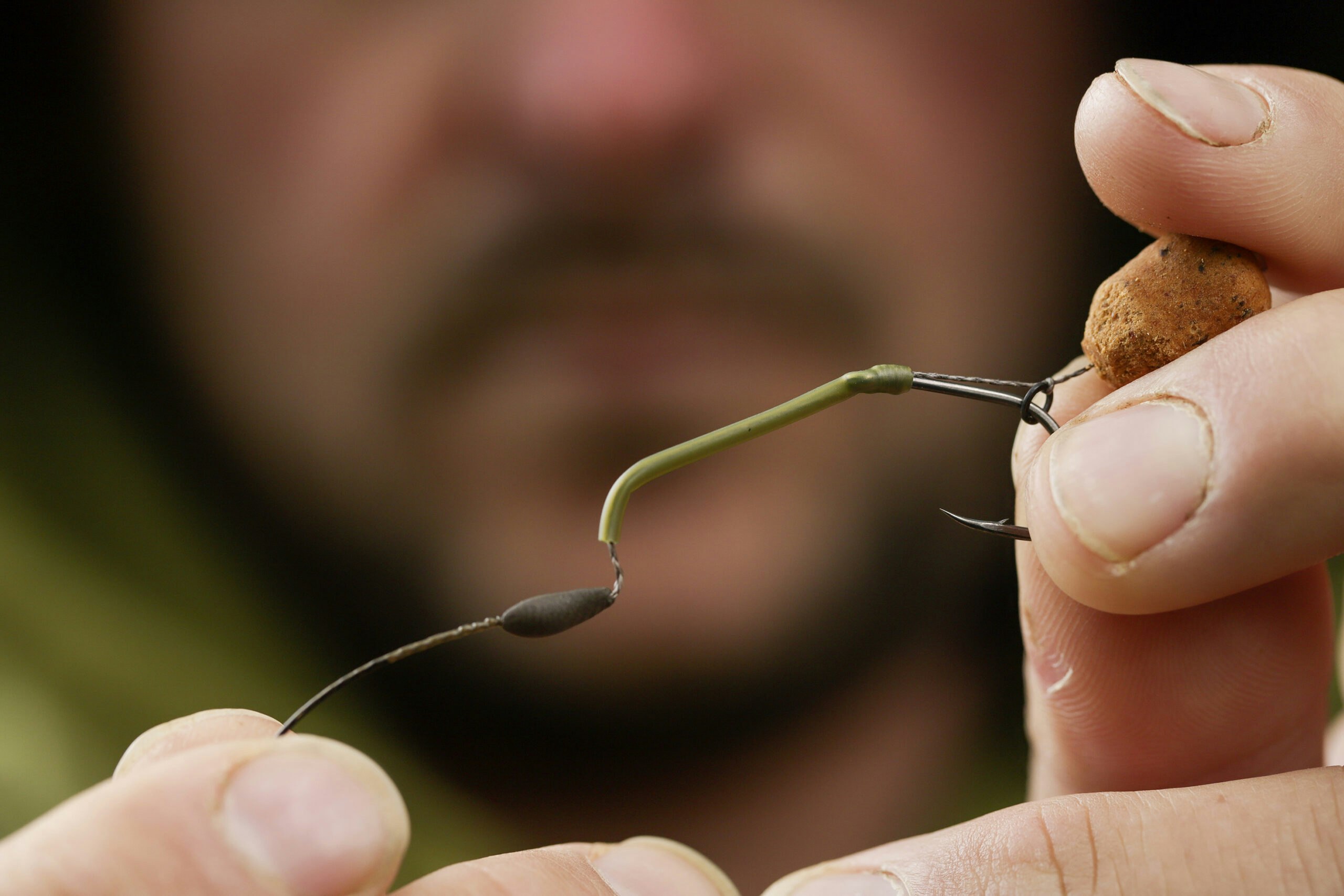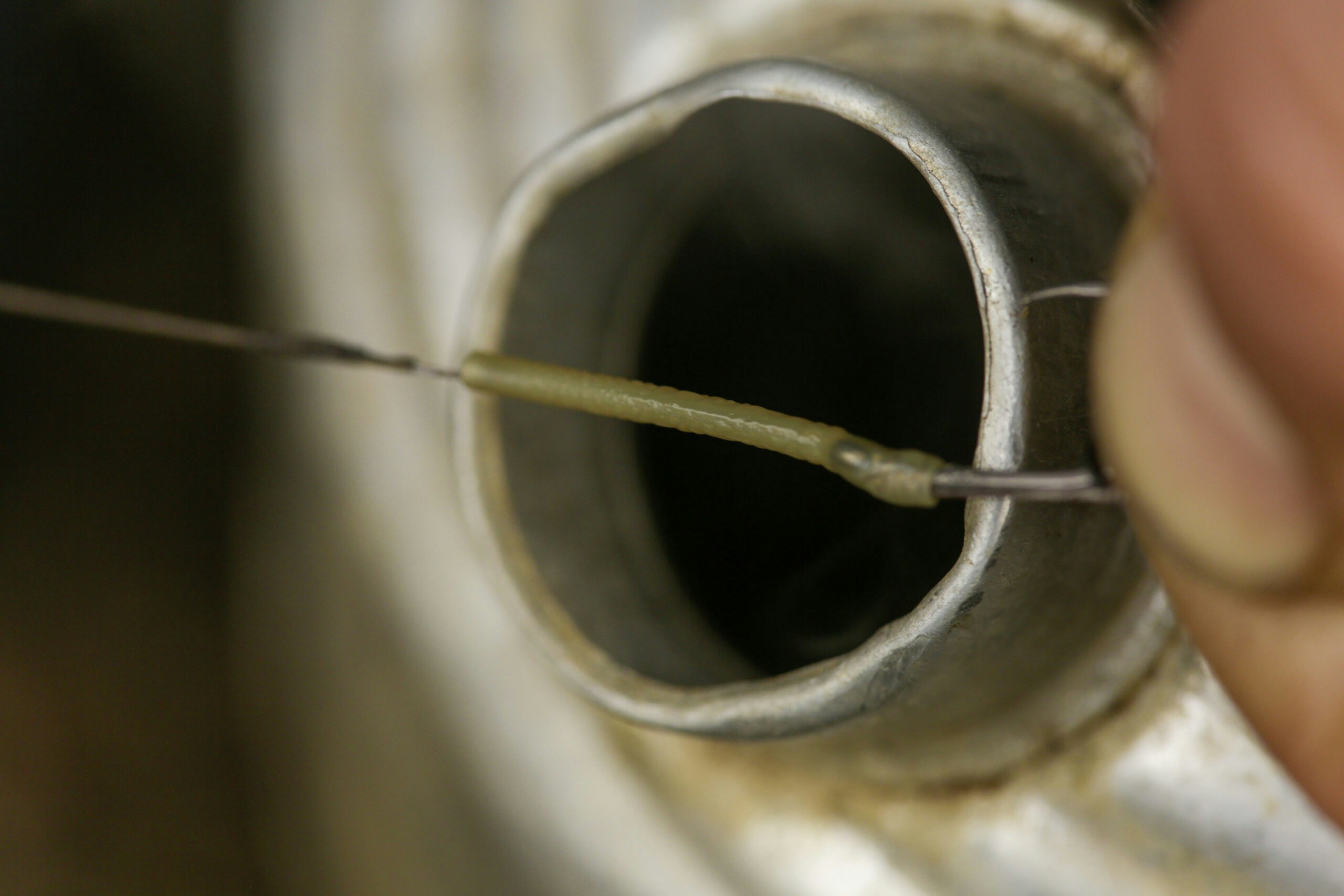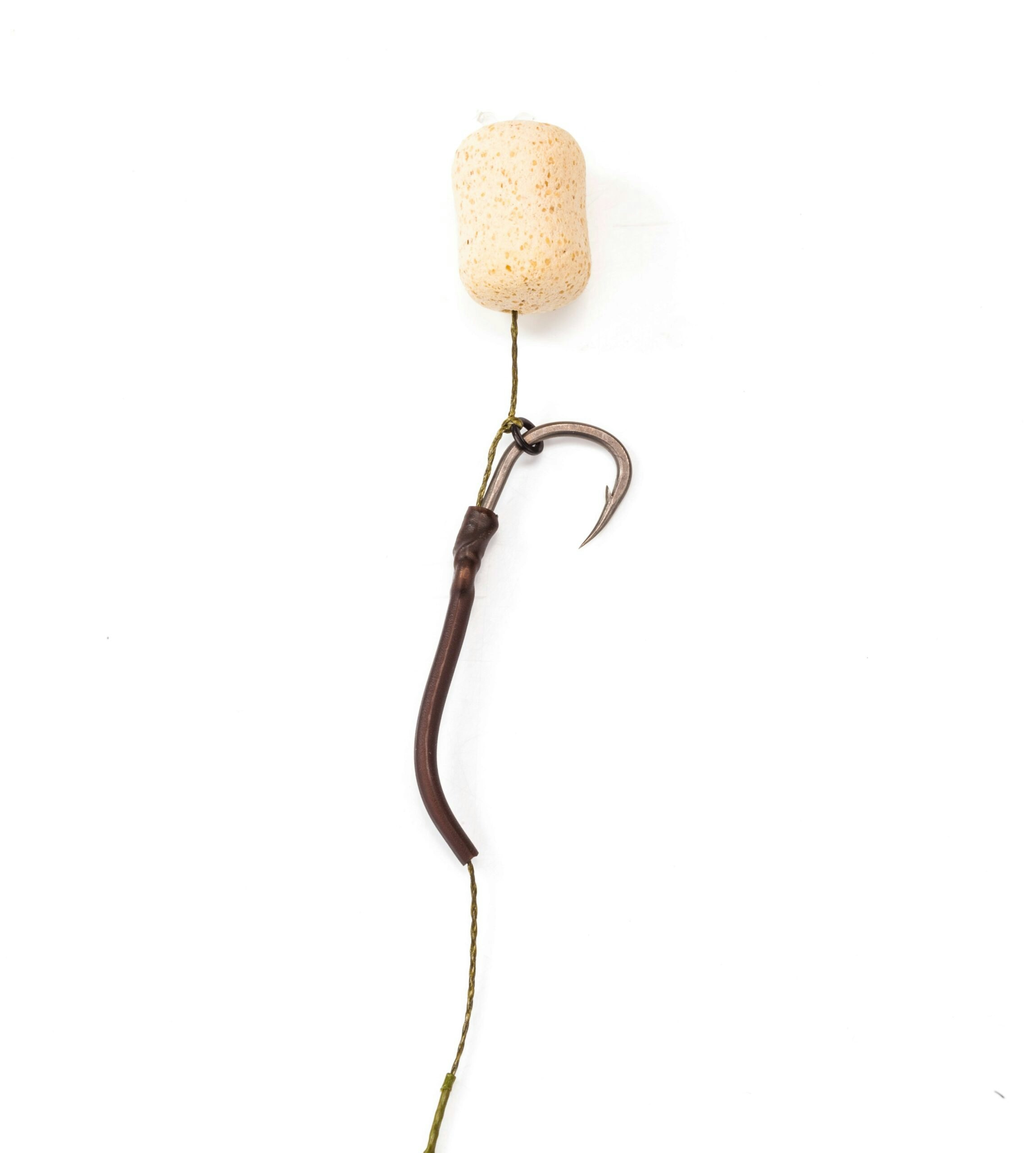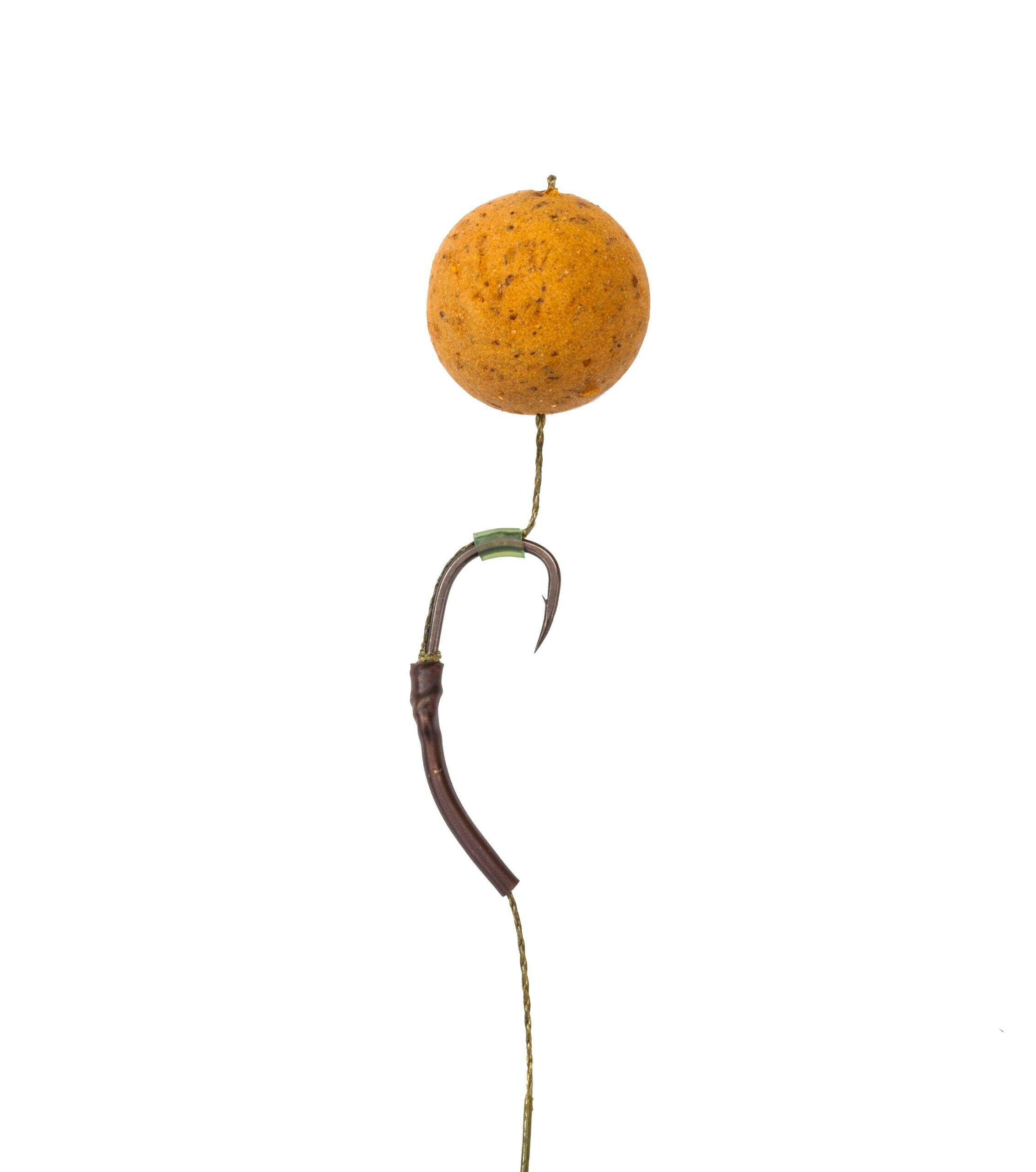Shrink tubing is a length of plastic tube that reduces in diameter once it is heated up. Even just a small piece of this shape-changing tubing can radically transform your rigs.
In the late 1980s/early 1990s, carp anglers started to realise that the addition of this clever bit of tubing to their set-ups could enhance the mechanics of their rigs.
The development of the line-aligner rig by Jim Gibbinson in 1992 used shrink tubing to help the hook to flip over and catch hold. This formed the basis of the many different types of kickers which are now found on the majority of carp rigs. In fact, these days it’s rare to see a rig cast out which doesn’t incorporate shrink tubing in one way or another!
IF YOU NEED MORE RIG ADVICE, CHECK OUT OUR EXPERT CARP FISHING RIGS GUIDE FOR ALL YOU NEED TO KNOW!

Rig mechanics benefits
Without turning this into a science lesson, adding a length of shrink tube extends the shank of the hook and moves the fulcrum (axis of turning) further away from the hookpoint.
A long curved or angled piece of tubing causes a hook to flip over so that the point is facing down and is in prime position to catch hold. Try dragging a rig without tubing and the same rig with a piece of tubing over the palm of your hand and you’ll notice the one with the tubing flips over and catches hold much quicker.
During the shrinking process, the tubing can also be bent or curved, and it will then retain that shape. This enables you to create everything from extended sweeping shanks to short aggressive kickers.
WANT TO CATCH A BIG CARP? OUR WHERE TO FISH GUIDE HAS SOME EXCELLENT VENUES TO TRY!

Hooks for tubing
The key factors to consider when deciding what type and length of tubing extension to use are the pattern of the hook and the angle of the eye. As a general rule, hooks with an inturned eye are better combined with shorter extensions of up to 2cm.
Straight-eyed patterns can incorporate longer shank extensions without the risk of closing off the hook’s gape. You can also create more unusual presentations, such as the Withy Pool and Noodle rigs.
Hooks with an out-turned eye are designed for use with stiff hooklink materials and aren’t really suitable for use with shrink tubing.
WHY NOT PAIR UP AN AWESOME RIG WITH A SET OF THE BEST CARP FISHING RODS?

Long shank pop-up rig
A great rig for using with a couple of pieces of fake corn or a small 12mm pop-up boilie. The tubing is cranked over aggressively, which creates a ‘claw’ effect. This means that once the hook has penetrated, there is very little chance of it coming out again. It’s important to only use a short piece of tubing for this. Ideally, the end will be level with the point of the hook. Any longer and it will close the gape and reduce the rig’s effectiveness.
THIS RIG IS GREAT FOR PARTICLE FISHING, CHECK OUT THIS ARTICLE ON MAKING THE PERFECT PARTICLE MIX.

Withy Pool rig
This slightly bizarre looking pop- up rig is named after the venue where it was devised – Withy Pool, in Bedfordshire. Subtle it isn’t, but if you’re faced with pressured fish that are adept at dealing with standard rigs, this could be the answer. The idea is that the long curved piece of tubing will fit around a carp’s bottom lip. To get a perfect curve, use a cork to wrap the tubing around when holding in boiling water or over steam.
LOOKING FOR AN EDGE? TRY OUT THESE FORGOTTEN CARP TACTICS TO CATCH MORE CARP NOW.

The Noodle rig
This advanced big-carp set-up, developed by Scott Lloyd, uses half a stick of tubing to create a long shank curved hook effect. It works best with wafter or balanced hookbaits, and is a rig which carp find difficult to eject once it’s inside their mouth. To create the curved section, try dunking the rig in boiling water rather than steaming it, because that way you’ll have longer to mould the tubing into the required shape.
YOU WILL NEED A SET OF THE BEST BITE ALARMS WITH ALL THE EXTRA FISH THESE RIGS WILL CATCH YOU!

Simple bottom bait rig
This set-up incorporates a wide gape hook pattern with a long, slightly curved kicker. The curvature helps the rig to flip over in the carp’s mouth, and the length of it makes it extremely tricky for
a carp to get rid of. The hair is trapped in place with a piece of silicone tubing just past the bend and below the barb. Having the hair in this position when using a bottom bait helps to flip the hook over when a carp picks it up.
CARP OFTEN FEED BETTER DURING DARKNESS, THE BEST FISHING BIVVIES WILL KEEP YOU DRY AND COMFORTABLE.

